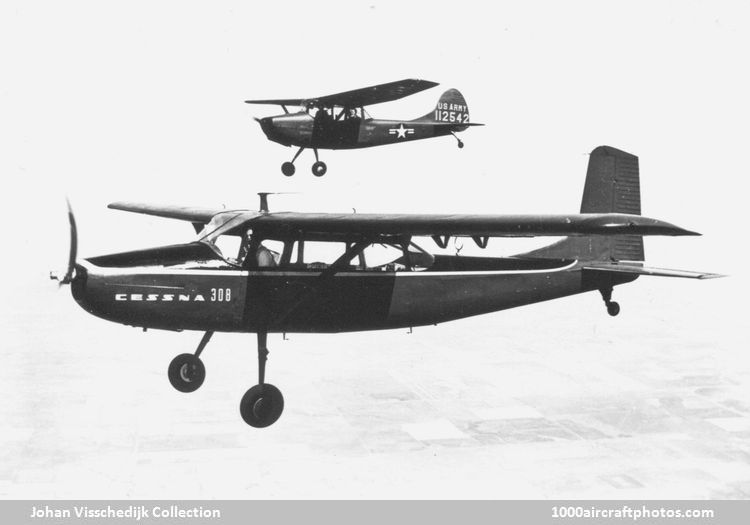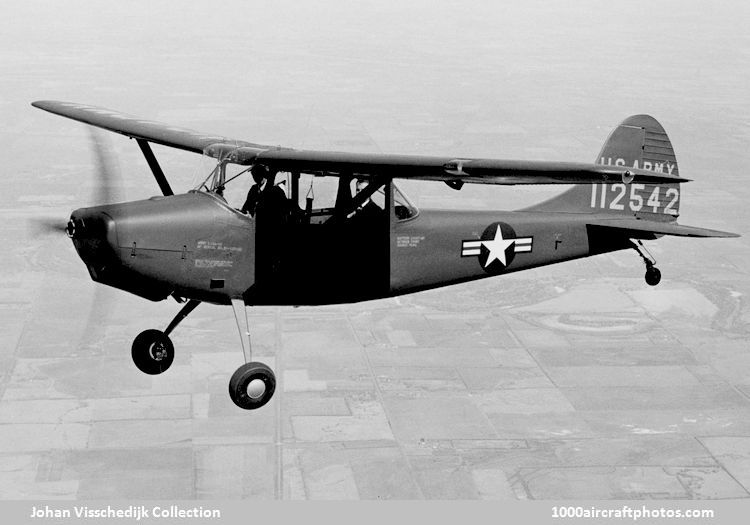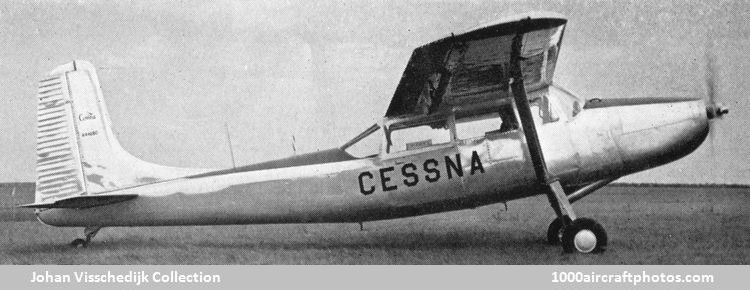Registered N41696 on August 13, 1951, the Model 308 was first flown July 31, 1952 with test pilot Bill Thompson at the controls. However, also in 1952, the US Army was permitted to buy the Beaver after weight restrictions were lifted, putting the Model 308 out of immediate contention for a government contract. Despite this setback, Cessna continued to develop the airplane, finished in a special paint scheme, as seen below, it was demonstrated to US Army at Fort Bragg, North Carolina, in the spring of 1953, but to no avail.

The Model 308 returned to Cessna and was disassembled and put in storage. It was scrapped in March 1956 and deregistered the following April 30.

The pictured chase plane was a factory fresh L-19A Bird Dog. Built under an USAF contract, it was handed over to the US Army after acceptance. In the 1960s it was converted to a Model 305D O-1G and used for Forward Air Control (FAC) operations. It was withdrawn from the US Army service on April 15, 1971, three months later, July 12, 1971, it was transferred to the South Vietnam AF. Its fate is unknown"
